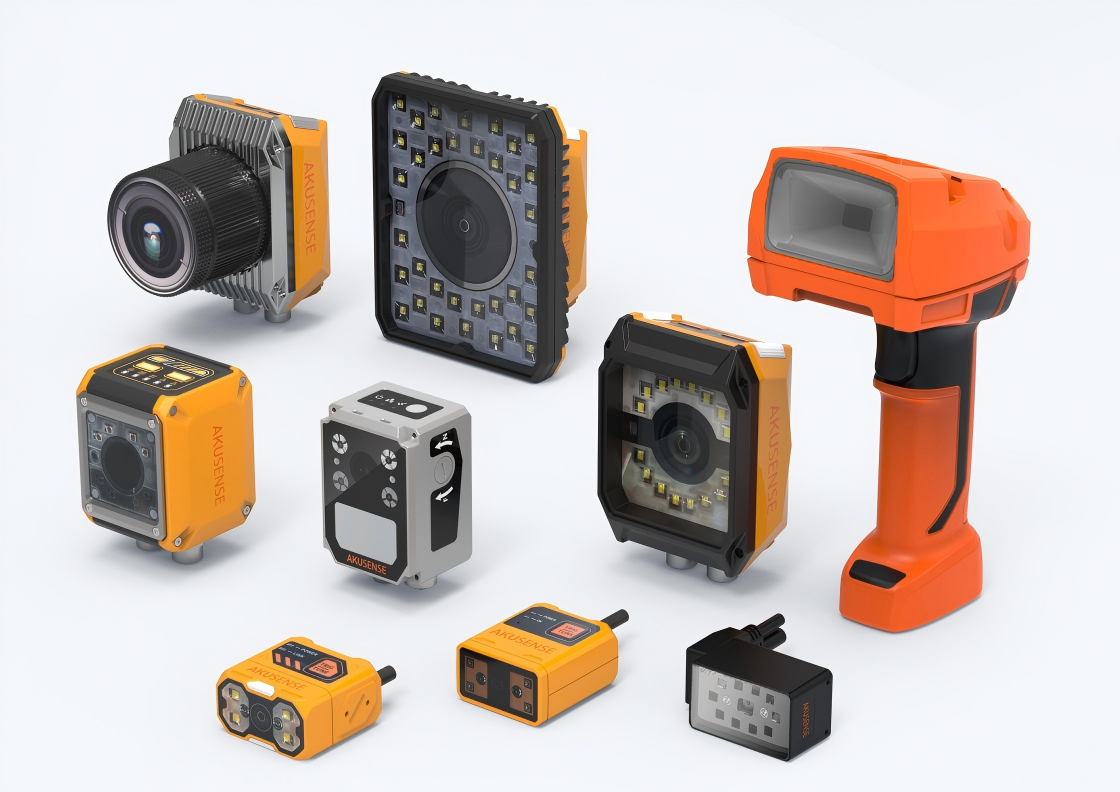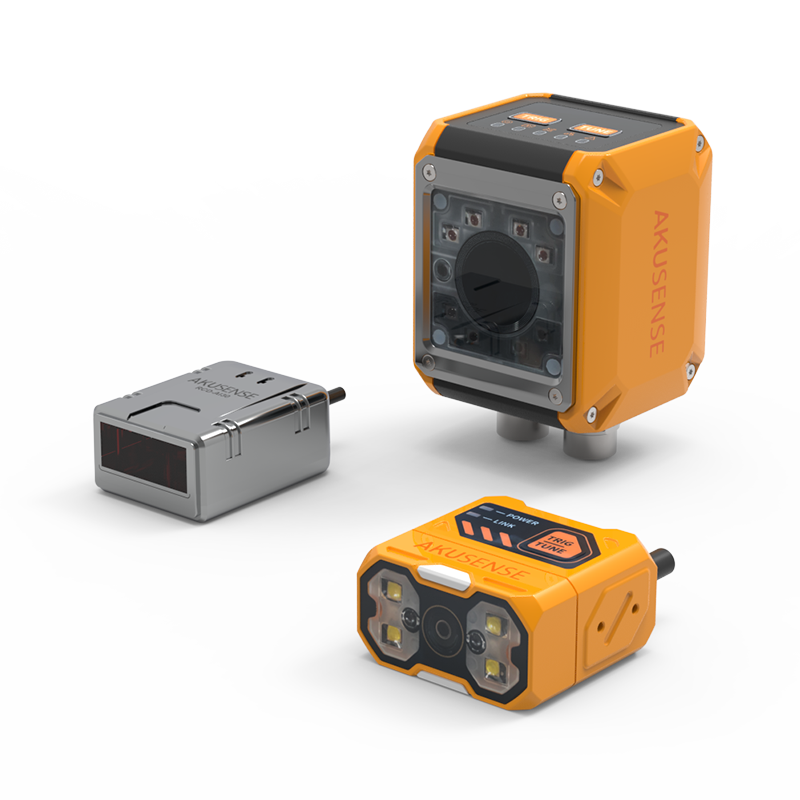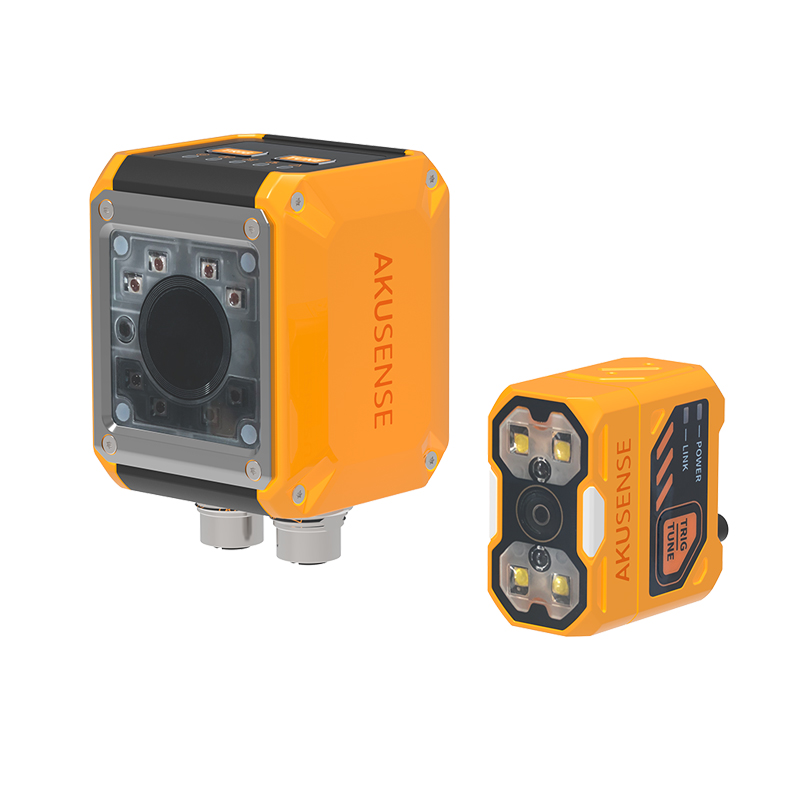Smart Code Reader Selection Guide: 5 Steps to Accurately Match Your Needs
2025.07.14
AKUSENSE Sensor offers a comprehensive smart barcode reader matrix – 10+ specialized models engineered for diverse industrial scenarios. With such versatility, engineers often ask: "How do I quickly select the right one?" Let’s simplify your selection journey!

5 Critical Selection Factors
1. Read Performance
Core metrics: Read speed, scanning distance, and angular tolerance.
- High-speed production lines: Prioritize rapid decoding (e.g., 60+ scans/sec) and motion tolerance.
- Warehouse logistics: Opt for long-range (0.3–3m) and wide-angle (≥60°) capabilities.
2. Decoding Capability
Evaluate algorithm robustness against damaged, low-contrast, or distorted codes. Key considerations:
- Support for 1D/2D symbologies (QR, Data Matrix, Code 128).
- Processing speed (<100ms per decode) and density handling (up to 5mil).
3. Environmental Resilience
Verify IP ratings (IP65/IP67), operating temperature (-20°C to 50°C), and resistance to vibration/shock. Critical for:
- High-humidity washdown zones
- High-dust environments (e.g., mining, automotive)
4. Connectivity & Protocols
Ensure compatibility via:
- Wired interfaces: GigE, USB 3.0, RS-232
- Industrial protocols: EtherNet/IP, PROFINET, Modbus TCP
Prioritize real-time data transfer stability for IIoT integration.
5. Cost-Efficiency
Balance TCO (Total Cost of Ownership) with performance. Avoid false economies industrial grade reliability justifies premium investment.
Key Parameter Deep Dive
|
Parameter |
Impact |
Application Tip |
|
Resolution |
Minimum decodable module size (e.g., 0.08mm/pixel at 2MP) |
Higher res = smaller codes (pharma/electronics) |
|
FOV (Field of View) |
Scanning area coverage (e.g., 300×200mm at 500mm WD) |
Wider FOV = fewer readers for large conveyors |
|
Focal Length |
Working distance-to-FOV ratio (Formula: Focal Length = WD × Sensor Size / FOV) |
Shorter FL = larger coverage at close range |
|
Read Rate |
Scans/second (e.g., 120 fps for high-throughput lines) |
Match to conveyor speed + code density |
|
Working Distance |
Min/max decode range (e.g., 50mm–1500mm adjustable) |
Logistics: 300mm–2.5m; Factory automation: 50mm–500mm |
|
Decoding Accuracy |
First-read rate (>99.9% critical for zero-defect lines) |
Validate with ANSI/ISO 15416 compliance |
Step-by-Step Selection Workflow
1. Calculate Minimum Module Size
- Measure narrowest bar (1D) or module (2D) width (e.g., 0.25mm).
2. Determine Required FOV
- Map scanning area (e.g., 400×300mm for package sorting).
3. Select Resolution
- Apply: Min. Pixels per Module = 2
- Example: 0.25mm module + 300mm FOV → 1200×900px = 2MP camera.
4. Compute Focal Length
- Formula: FL = (WD × Sensor Size) / FOV
-Inputs: WD=600mm, Sensor=1/1.8” (8.1mm), FOV=350mm → FL≈14mm.
5. Validate Secondary Parameters
✅ Scan rate: ≥ line speed (e.g., 1.5m/s conveyor = 60+ scans/sec)
✅ Lighting: Red LED for non-red backgrounds; polarized lens for glossy surfaces
✅ Protocols: EtherNet/IP for PLC integration; JSON for cloud APIs
Why Optimization Matters
Smart barcode reader selection impacts OEE (Overall Equipment Effectiveness). Under-specification causes read failures; overspending erodes ROI.
Akusense sensor’s solution matrix delivers:
- Industry-leading decode rates under <5 lux lighting
- Seamless MES/SCADA integration via OPC UA, TCP-IP
- 20%+ longer MTBF (Mean Time Between Failures) vs. industrial standards
Pro Tip: For high-reflectivity surfaces (e.g., automotive parts), use cross-polarized models to eliminate glare.
Still have questions?
Connect with our engineers to optimize your application!
+86 18188641602



